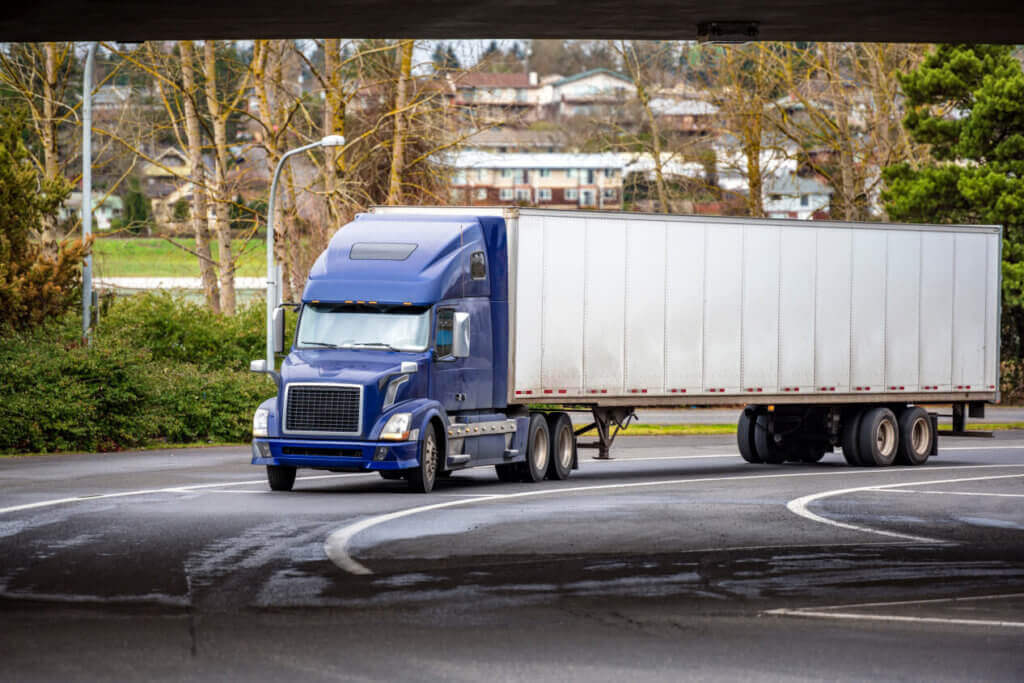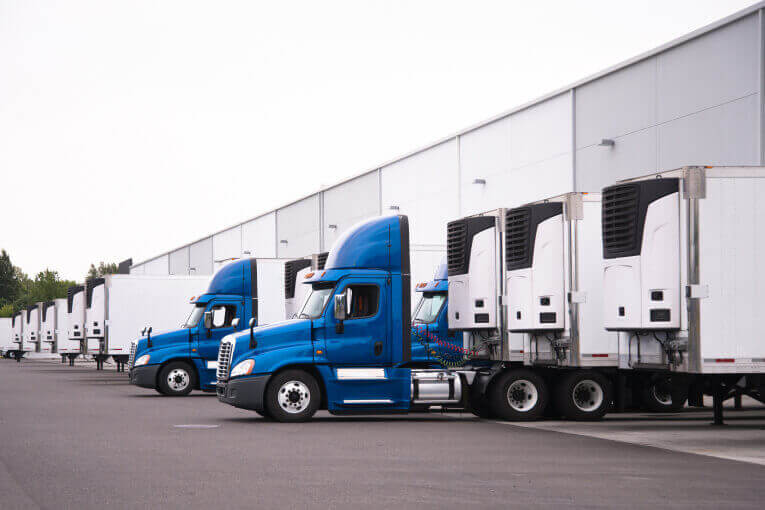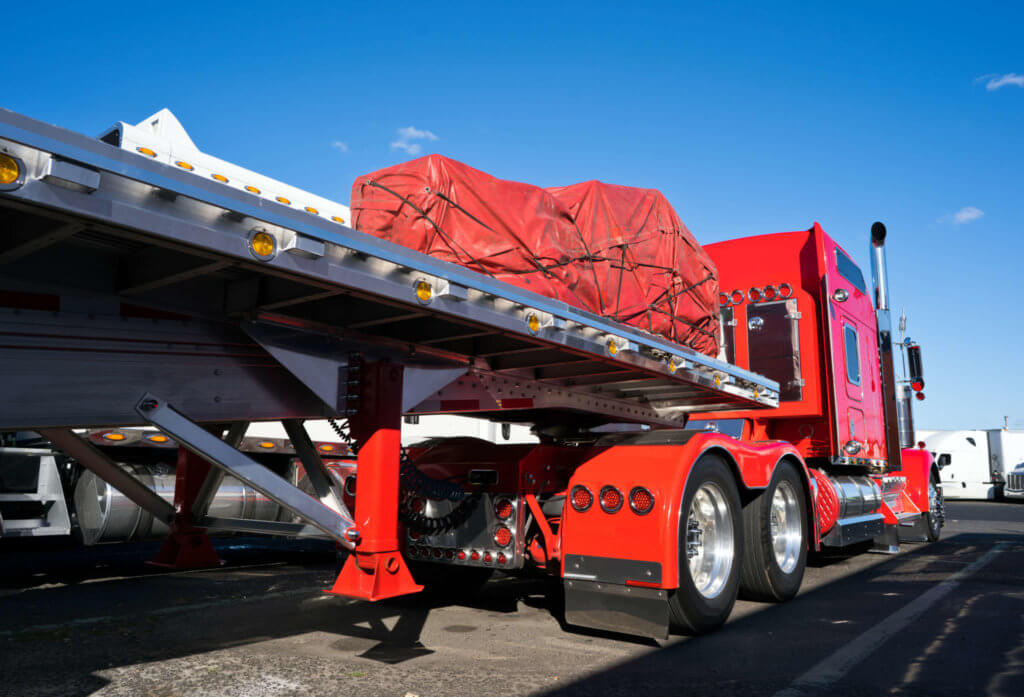What is Freight Shipping?

Freight shipping is the practice of transporting bulk cargo by road, rail, sea, or air. “Freight” refers to the physical goods or commodities carried in bulk by trucks, trains, ships, or planes. “Shipping” is the process of transporting freight. All freight is shipped, regardless of the method.
There are five main freight shipping methods: truckload, less than truckload (LTL), partial truckload, intermodal, and expedited. In this article, we map out all the different ways companies ship freight. We’ll also cover rates for various cargo and the different classifications associated with those loads.
There’s a better way to find loads.
Demo the Truckstop Load Board and see how easy it is to find the right loads fast.
Find your next load
Make more money starting now.
Freight shipment classifications and definitions
Parcel versus freight
Almost any shipment larger than a standard parcel is freight. Smaller packages of less than 30 cubic inches or that weigh less than 150 pounds are “parcels.” For example:
- A load of televisions sent to your local electronics store is freight.
- A single television you buy online and have shipped to your home is a parcel.
In short: If cargo is too big to be a parcel or if it is shipped in bulk, you can consider that freight shipping.
How does freight shipping work?
While one person in a van might pick up a parcel by hand, freight shipping requires much larger infrastructure, including docks, loading and unloading equipment, and large vehicles.
Shippers will either load cargo directly onto the floor of trucks, ship it on pallets, or cart it in totes. Pallets are double-deck wooden platforms, 48″x40″. You can fit up to 26 of them in an average 50′ trailer. A tote is a large bin or container. Agricultural freight is often shipped in open totes, while chemicals usually ship in closed plastic containers for liquids.
Freight shipper versus freight carrier

Shippers are the companies who ship freight. They are the ones sending out cargo into the world.
Carriers are the transport companies and owner-operators who physically haul the cargo on their trucks and trains or by boats and airplanes. They are the drivers and the companies who employ the drivers.
Freight brokers often help connect shippers and carriers as well as facilitate the transportation of shipments.
Freight shipping options
Carriers break down the various options for shipping freight into five main categories: FTL, PTL, LTL, Intermodal, and Expedited.
Full truckload (FTL)
Full truckload is as the name suggests. It refers to any shipment that takes up an entire trailer, whether it’s a standard 50′ dry van, a reefer unit, or even a tanker. The freight usually exceeds 15,000 lbs. It could be one large item or as many as 26 pallets. You do not need to assign a freight class to FTL shipments.
Partial truckload (PTL)
Partial truckloads are shipments that won’t fill a trailer completely. That means multiple shippers can split the cost of transportation. Like full truckloads, partial truckloads are usually point-to-point, meaning your cargo will be loaded onto one truck and stay there until it reaches its destination. PTL freight is charged per mile but prorated based on the dimensions and weight of your shipment. You do not need to assign a freight class to a PTL load.
Less-than-truckload (LTL)
A common cause for confusion among those looking to ship freight is the designation of LTL vs PTL shipments. Less than truckload (LTL) freight is similar to PTL loads in that it doesn’t take up a full trailer. The difference is that LTL shipments are more likely to be moved onto multiple vehicles during shipping. LTL shipments require the shipper to designate a freight class. The freight class reflects the type, volume, and density of your cargo. Carriers use the freight class when setting rates for freight shipments.
Intermodal
Intermodal freight means multiple modes or methods of shipping. When cargo travels by a mix of rail and road (or even ship and rail), it’s called Intermodal. Intermodal freight offers the best shipping rates because you can save on fuel costs and ship goods more cheaply by using non-road shipping lanes for part of the journey. That lowers the total per-mile cost of your shipment.
Expedited
Time is money, so expedited shipping is the most expensive freight shipping method. Expedited cargo usually travels by air, which is costlier but far faster than ship or rail. Freight transported by truck in express shipping lanes, often overnight, is another common type of expedited freight.
Common freight shipping transportation types
Most road freight shipping uses one of the three most common trailer types: Dry van, reefer, and flatbed. The exact type of your shipment will determine which is the best freight shipping method.
Dry van freight

Most shipments on U.S. roads travel by dry van trailers. Dry van shipping trailers are sealed boxes between 48′ and 53′ long with a carrying capacity of 45,000 lbs. Secure and weatherproof, they usually fit 26 pallet spaces. Dry vans are not temperature controlled.
Reefer freight

Reefer, or refrigerated freight, is any temperature-controlled shipment. Reefer trailers have an HVAC unit that either heats or cools the trailer to keep the goods inside at a stable, consistent temperature throughout the journey. Food products, agricultural goods, and pharmaceuticals make up the majority of reefer shipping.
Flatbed freight

Carriers use flatbed trailers to haul bulky or awkwardly shaped cargo. One disadvantage of the flatbed is that they expose your cargo to the elements. But things like lumber, construction materials, or machinery won’t fit inside a dry van. Those types of items make up the bulk of flatbed shipments.
9 factors that affect freight shipping rates
Shipping companies set their charges based on a variety of factors, including:
1. Freight type
The type of cargo you need to move impacts the type of equipment needed to haul it, impacting the rate. Dry vans are the cheapest of all transport methods, with reefer trucks and flatbeds close behind. Heavy-haul cargo and dangerous goods all cost more than standard freight.
2. Freight weight
The size and weight of the cargo also impact your rate. Generally, carriers charge based on whichever is larger: the rate by height, depth, and width (volume), or the rate based on raw weight.
3. Freight density
If your item is light but takes up a lot of space, you’ll need to pay more. That’s especially true of Less Than Truckload cargo. Carriers charge LTL loads according to freight class. Under this system, less dense items are more expensive to transport than heavier items.
4. Shipment method
Whether truckload, LTL, or partial truckload, the mode of shipment helps set a base rate for your shipping charges. Expedited shipping by air is the most expensive, while intermodal shipments are often the cheapest.
5. Supply and demand
The availability of trucks for your load impacts how much it costs to ship. Savvy shippers look for well-used shipping lanes where competition for loads is high. More competition among carriers equals lower prices for shippers.
6. Distance
Freight shipping gets more expensive when the origin and destination are further apart. It is true that longer-haul trips often produce the best cost-per-mile rates for freight shipping because the time and vehicle costs are spread over more miles for that job. However, the overall cost for hauling cargo over longer distances is nearly always higher because it takes longer and users more fuel to travel further.

7. Destination type
Simple delivery destinations like distribution centers or transport hubs are less expensive than inner-city or more specialized locations. The more easily and quickly a driver can get in and out of the drop-off location, the less expensive the shipping.
8. Special handling
A freight shipment that requires temperature control or hazardous cargo that requires special equipment or licenses will all result in higher charges than standard dry goods. If your load requires special attention of any sort, the shipping company will factor in the extra time and expertise required when calculating your final costs.
How to prepare freight shipments
The best way to avoid damage or shipping errors is to properly prepare your load for shipment. Following these tips will ensure your freight arrives safely at its destination.
Prepare pallets.
Choose the correct pallet size and weight capacity for your cargo. Never let your goods hang over the edge, and always stack goods carefully. It’s best to keep like goods with like where possible. When you have to mix products on a pallet, put the heaviest items at the bottom and the lightest at the top. Lastly, make sure you wrap your pallet securely, so it won’t shift during transit.
Prepare non-palletized shipments.
If you aren’t going to use pallets for your cargo, make sure you choose an appropriate packing method and ensure it’s packaged carefully. Use buffers like bubble wrap, tape, foam, or even wooden blocks on wrapped cargo to protect it.
If you reuse containers, boxes, or crates, get rid of old labels, especially address labels. Also, make sure the container isn’t damaged. It needs to handle the weight of your load, as well as the rigors of freight shipping.
Add labels.
Write labels containing clear instructions, including the freight destination, any special requirements, notices about weight, or handling instructions, and place them on all sides of your cargo. You should also include contact details for both your company and the recipient. Lastly, make sure you include an inventory of each pallet or container.
Follow carrier instructions.
Always read the instructions provided by the carrier company. Get your paperwork ready ahead of time, including the bill of lading and any authorization forms, and make sure you’ve provided all the information the carrier has asked for.
Freight shipping FAQs
You’ve probably already heard the names of some of the biggest shipping companies. You will see their names and logos on trailers out on the highway. Some of the best-known freight shipping companies include:
- DHL Freight
- FedEx Freight
- Holland
- Old Dominion Freight
- UPS Freight
- R+L Carriers
- SAIA
- YRC
Use a load board to find the best shipping rates.
Truckstop connects shippers to tens of thousands of carriers, from large multi-national shipping companies down to single-truck owner-operator drivers right across the country. Using a load board gives you access to a large pool of trucks for your freight shipments, as well as tools like:
- Freight matching
- Planning and tracking tools
- Transportation management systems (TMS)
- Real-time rate analysis
- Convenient payment solutions
Truckstop is the internet’s first and most trusted load board. Our agents can guide you through the platform and show you how to find the best shipping rates for your cargo.
Get a demo of our powerful freight-matching tools today at Truckstop.

Find out how our platform gives you the visibility you need to get more done.
Get helpful content delivered to your inbox.
Schedule a demo.
Find out how our platform gives you the visibility you need to get more done.





